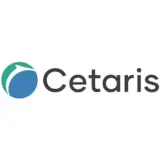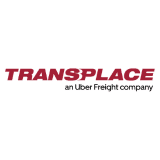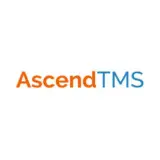SafetyCulture (formerly iAuditor) Transportation Management Software
SafetyCulture (iAuditor)



- Free Version: Available for teams of up to 10
- Pricing: Premium plan $24/month (with a free 30-day trial period)
- Platforms supported: Available as a mobile app (iOS and Android) or a web-based software
Why use SafetyCulture?
One of the top-rated digital inspection platforms, SafetyCulture can be utilized as a transportation management software, allowing transportation and logistics businesses to monitor operations 24/7, capture issues, and resolve problems with immediate corrective actions. Aside from streamlining said workflows, effective data digitization and efficient automation ensure that teams fully collaborate and that everyone is in compliance with regulations.
Features:
- Create checklists and templates from scratch or use any of the pre-built ones in the Public Library for inspections, auditing, and routine reporting.
- Manage assets properly by tracking goods, monitoring drivers, raising issues as soon as they are identified, and recommending actions to resolve problems.
- Incorporate geo-tagging, warehouse sensors, and real-time alerts in the system, providing managers with a complete view of the operations.
- Use Analytics to measure and track performance for future planning and optimization.
- Generate daily reports with photo and video attachments, which managers can review or send to regulatory offices for compliance.
Why use Trimble TMS?
This digital solutions supplier provides one of the most effective transportation management systems, enabling logistics firms to improve collaboration among relevant stakeholders, optimize their resources, and broaden freight coverage to assure supply chain continuity and customer satisfaction.
Features:
- Tracking and visibility
- Routing and optimization
- Safety and compliance
- Free Version: None
- Pricing: Available upon registration
- Platforms supported: Web, iOS, Android
Why use Luminate Platform?
Blue Yonder, formerly known as JDA, offers Luminate Platform, a supply chain management system that helps companies handle their logistics, from supply inventory to order management. Their single easy-to-use dashboard can be viewed and controlled by teams and stakeholders involved in real-time.
Features:
- Inventory optimization
- Transportation management
- Workforce management
- Free Version: None
- Pricing: Available upon registration
- Platforms supported: Web, Desktop, iOS, Android
Why use Cetaris?
Primarily a maintenance management platform, Cetaris can be used to manage the transportation activities of fleet companies. With their comprehensive suite of features, managers are able to optimize labor productivity through well-scheduled work orders, minimize failure patterns by auto-flagging risks, and meet safety and compliance standards.
Features:
- Shift scheduling
- Real-time monitoring
- Predictive analytics
- Free Version: None
- Pricing: Starts at $1,000 per month plus add-ons (Customized quote available)
- Platforms supported: Web, iOS, Android
Why use Transplace?
This cloud-based transportation management system designed for in-house use, helps freight companies automate the key aspects of their operations, such as preparing certifications, computing costs, tracking shipments, and generating reports. Dynamic and continuously evolving, this is the perfect tool for companies handling varied fleets in the logistics industry.
Features:
- Real-time visibility
- Service prediction
- Business intelligence in reporting
- Free Version: None
- Pricing: Available upon request (with free trial)
- Platforms supported: Web, Desktop
Why use AscendTMS?
This TMS solution is considered one of the best in the world, as it gives companies complete control over their daily freight activities through their user-friendly dashboard and 24/7 support. They also offer numerous services at no additional cost like installation, maintenance, and shipper directory.
Features:
- Load and dispatch management
- Automated workflow engine
- Digital connection to drivers
- Free Version: Basic plan is free, inclusive of standard features for 2 users
- Pricing: Premium plan costs $99 per user per month (with a free 30-day trial period)
- Platforms supported: Web, iOS, Android
Why use MercuryGate?
This TMS platform provides end-to-end supply chain services that freight companies can rely on, from rapid deployment to in-house training. Aside from ensuring efficiency in day-to-day operations, consumers can expect fast, affordable, and sustainable deliveries, even reverse logistics, if required.
Features:
- Automated workflows
- Shipment and order visibility
- Final mile delivery (routing and scheduling)
- Free Version: None
- Pricing: Available upon registration
- Platforms supported: Web, On-premise, “Final Mile” app available on Android and iOS
What is Transportation Management Software?
Transportation management software (TMS) is a digital tool that helps companies manage the physical movement of goods, ensuring these arrive safely and on time. The platform encompasses storage planning, personnel scheduling, optimal routing, and shipment tracking, among others. Most importantly, this gives fleet managers and operators real-time visibility to make data-driven decisions, particularly with unforeseen disruptions.
This could be a stand-alone application or a module of the more comprehensive fleet management system or supply chain management platform.
Importance
Managing logistics and transportation is challenging because there are numerous factors to consider: coordination with third-party suppliers, travel distance, mode of transport, and delivery times, just to name a few. Transportation management software streamlines all these workflows, allowing your company to reap numerous benefits.
- Enhances visibility – Driver telematics, geo-tagging on vehicles, warehouse sensors, and merchandise barcodes allow managers to organize and track products, monitor their drivers’ activities, and proactively address any issues that emerge.
- Ensures safety – The different features of the software can assure fleet and driver safety. For instance, shipment tracking ascertains that products won’t get lost, stolen, or damaged. Carrier management, on the other hand, safeguards drivers from accidents as it checks licenses, insurance documents, and safety ratings before they begin their trip.
- Validates compliance – Transportation and logistics are governed by a set of policies set by government offices and non-governmental organizations. Fleet operators must abide by the regulations that apply to them or risk getting fined or penalized. With data digitization, companies can efficiently collate permits, inspection documents, and audit reports so they can lawfully operate.
- Saves resources – Any type of disruption in the operations, however minor that may seem (e.g., traffic, bad weather conditions, packaging errors), can cause costly delays. The software reduces the possibility of those happening, ensuring that operations run smoothly. Cost savings on fuel and maintenance also fosters sustainable logistics that greatly benefit the company’s current reputation and future in the industry.
- Better customer service – The end goal of any transport and logistical service is to deliver goods to the end consumers safely and on time. Integrating the software into the company’s operations facilitates many tasks, like answering customer inquiries and requests, considerably reducing delivery times, and making reverse logistics less stressful.
Key Features
Fleet operators and managers can use the software to good advantage when it has all the essential features. Here are some examples:
- Repository of customizable templates
- Secure document storage
- Asset management
- Warehouse management
- Scheduling and dispatching
- Route optimization
- Geo-tagging for tracking
- Monitoring
- Collaborative tools
- Analytics and reporting
- Compliance management
- Mobile accessibility with offline capabilities
Selecting the Right Transportation Management Software
All aforementioned platforms will be an advantageous addition to your current system. Before you make your final pick, take a quick look at the summary below:
| Transportation Management Software | Free Version | Paid Plan | Mobile App |
| SafetyCulture | Yes | $24/user/month* | Yes |
| Trimble TMS | No | Contact for pricing | Yes |
| Luminate Platform | No | Contact for pricing | Yes |
| Cetaris | No | $1,000/month + add-ons | Yes |
| Transplace TMS | No | Contact for pricing | No |
| AscendTMS | Yes | $99/user/month | Yes |
| MercuryGate | No | Contact for pricing | Yes |
* billed annually






